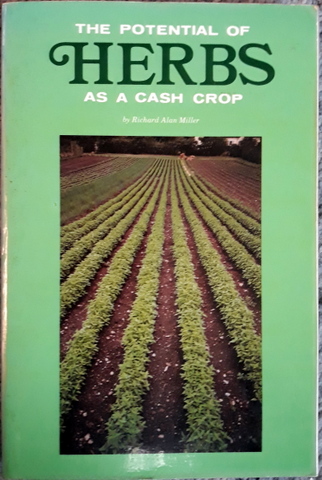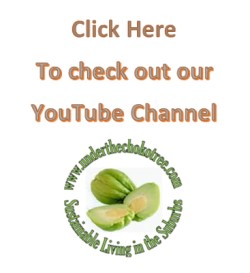Please note, these books are about culinary herbs and spices only. Granted, some culinary herbs and spices may have medicinal effects, but this is not the main thrust of these books. Similarly, these books do not cover ‘wild herbs’ also referred to as ‘weeds’, but if you want books on wild herbs then I suggest you look here and here.
Artistically Cultivated Herbs – Elise Felton – Woodbridge Press (US) 1995 ISBN 978 0 88007 07 1802 – This is a book, as the name suggests, is about growing culinary herbs in innovative and aesthetically pleasing ways. The first chapter is about the general requirements of growing herbs such as light, temperature and soil, making your own potting mixes, watering, fertilising, pests and diseases, and pruning and harvesting. Chapters two through eight are descriptions and plans for projects using and growing herbs. They are respectively: a herbal strawberry jar (pot); a window box of herbs; creating a herbal standard (ball on a stick); tying herbs onto a topiary frame; espalier using herbs; herbs in a moss covered hanging basket and creating bonsai with herbs. Chapter nine covers the propagation of ornamental herbs. The book has quite a few line drawings.
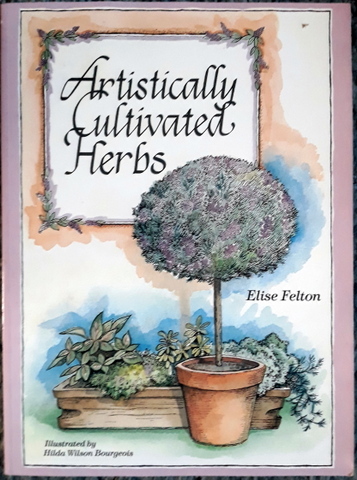
Hemphill’s Herbs, Their Cultivation and Usage – John and Rosemary Hemphill – Landsdowne Press (AUS) 1983 ISBN 978 0 7018 1695 3 – This was my first book about herbs, and you will see other titles by the Hemphill’s in this article. The initial part of the book is hints on using herbs, points to remember when propagating and cultivating herbs. The majority of the rest of the book is composed of a series of monographs on thirty one culinary herbs. Each monograph covers the common and botanical name, how the herb is propagated, a physical description of the herb, its history and mythology, how it is cultivated, harvested and processed, plus uses including culinary, medicinally, cosmetic and in companion planting. At the end of the book are a series of various culinary, cosmetic and medicinal uses for various herbs. The book has extensive colour photos.
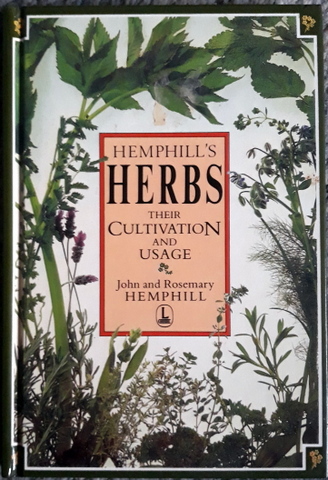
Grow Your Own Spices – Tasha Greer – Quarto Publishing Group (US) 2021 ISBN 978 0 7603 6802 2 – After the introduction (‘Spice – the final frontier in modern home food production’) The book is divided into three sections. Section one – fast growing seed spices – Covers techniques for starting spices from seed followed by monographs covering cool season seed spices such as dill, coriander and mustard and warm season seed spices such as cumin, paprika and saffron. Each monograph covers an intro to the spice, care, harvesting, a spice profile and required growing conditions. Section two – the spice underground – covers techniques for growing spices from roots bulbs and rhizomes followed by monographs covering temperate climate spices such as chicory, garlic and horseradish and monographs covering tropical climate spices such as ginger, turmeric and wasabi. Section three – perennial spices – covers growing techniques followed by monographs on Mediterranean and temperate perennial spices like capers, bay leaves and lavender, followed by monographs on tropical and subtropical perennial spices such as cinnamon, allspice and vanilla. The book has lots of colour photos.
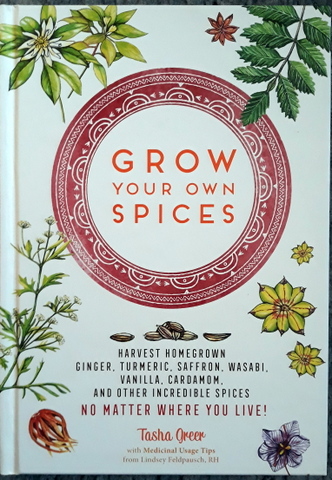
How to Grow culinary Herbs and Spices the Natural Way – Charlotte De La Bedoyere – Search Press Limited (UK) 1994 ISBN 0 85532 751 0 – The book is composed of a series of forty two monographs, mostly one page but some two page, on a variety of herbs and spices, arranged alphabetically according to the first letter of their botanical name. Each monograph states the herb or spices’ Latin name, common names, family, annual/perennial, height, favoured soil type, sun required, how they are propagated, main chemical constituents, cultivation, varieties, history, preserving and main uses as well as one or more colour photos. At the end of the book are a few pages on organic gardening, pests and diseases, propagation, designing a herb/spice bed and preserving herbs and spices. The book has lots of colour photos.
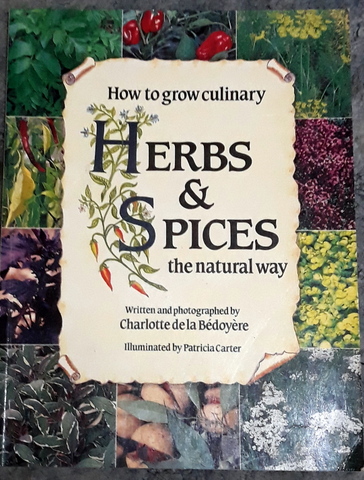
Vanilla Orchids – Ken Cameron – Timber Press (US) 2011 ISBN 978 0 88192 989 8 – While this is an incredibly detailed scholarly text about vanilla there is lots of good information on how to grow, harvest and treat vanilla pods, including making your own vanilla extract. The book has an introduction and ten chapters, the introduction covering vanilla as a flavour and fragrance. Chapter one talks about the origin and domestication of vanilla species, chapter two covers the evolution and geographic distribution of vanilla species and chapter three cover the plant structure. Chapter four discusses profiles of select vanilla species, chapter five covers vanilla hybrids and chapter six talks about vanilla’s closest orchid cousins. Now for the good stuff! Chapter seven covers cultivating vanilla at home and in the greenhouse, chapter eight covers pollination of vanilla flowers, chapter nine talks about vanilla harvesting and processing and chapter ten covers commercial vanilla products. There are 140 colour plates in a section at the centre of the book.

Garlic – Penny Woodward – Hyland House Publishing P/L (AUS) 2014 ISBN 978 1 86471 199 – If garlic is your thing, or you want it to be, this is a fantastic resource! The book is broken up into six sections. Section one (what is garlic?) talks about the plant, how it got is name, the chemistry of garlic, its history and its effect on breath and body odour. Section two (Growing garlic) talks about the accepted wisdom in detail on how to grow garlic, growing for sale, stories from growers and pests and diseases. Section three covers growing other garlicky plants including elephant garlic, garlic chives, garlic mustard, ramsons and society garlic. Section four covers harvesting, curing, storing, plaiting and preserving garlic. Section five covers cooking with garlic in general terms like choosing the type of garlic to use, preparing it, storing it in the kitchen, skin removal and how to use the various parts of the garlic plant and then provides a series of 40+ recipes. Section six covers medicinal uses including folk remedies. The book has lots of colour photos.
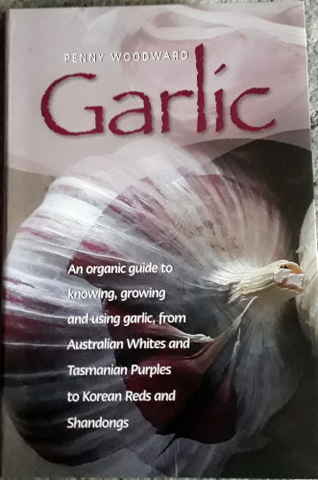
Herbs, How to Grow Them, How to Use Them – Susan Tomnay – Leisure Magazines (AUS) 1988 ISBN 0 7302 0116 3 – Not huge amounts of detail, but lots of pretty pics! Most chapters a 2 to 4 pages long. The first chapter covers how to grow herbs including a companion planting chart, the second chapter covers growing herbs indoors, the third chapter covers propagation. The fourth chapter is about designing a herb garden, the fifth chapter is a ‘dictionary of herbs’ covering 38 herbs with a few paragraphs on each one and a colour photograph. The sixth chapter covers herbs around the house and the seventh chapter is on herb teas. The final two chapters are on drying and preserving herbs and cooking with herbs (30 pages of recipes). As mentioned previously, the book has lots of colour photos.
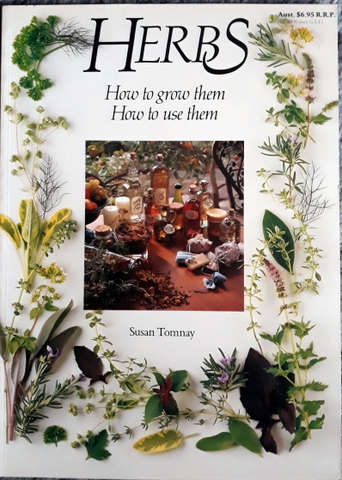
Herb Drying Handbook – Nora Blose & Dawn Cusick – Sterling/Lark (US) 1993 ISBN 978 0 8069 0281 7 – This is another book with LOTS of colour pics. It is broken up into two parts, part one (harvesting and drying techniques), after a few comments on harvesting talks about air drying, using desiccants, microwave drying and pressing. Then, after 13 full pages of colour pics, it talks about basic tools required for dried herb craft for a page. Part two (herb profiles) is a series of 58 one-page monographs on culinary, wild and medicinal herbs. Each monograph has an introductory paragraph, followed by a paragraph on how best to dry that particular herb, followed by a paragraph entitles ‘Cuisines and Crafts’ that talks about uses for the dried herbs. As mentioned earlier, lots of colour photos, mainly in part one.

Herbs – Jack Harvey – Macdonald Educational (the book was published as part of the ‘Macdonald Guidelines’ series (UK) 1978 ISBN 978 0 356 06004 7 – This is a small book that covers a lot of subjects with small amounts of details. The book is divided up into three sections, section one (Information) talks about man and the use of wild herbs, ancient herbalists and the physick garden, drugs and distractions, the scientific case for herbs and dyes and perfumes. Section two (Activities) talks about growing and drying herbs in general, growing them in pots and window boxes, cooking with herbs, making herbal oils, using wild herbs, potpourri and making herbal cosmetics. Section three (Reference) gives an A – Z of herbs in a series of two paragraph monographs covering over 200 herbs in 8 pages. It also gives an index of Latin names, list of (UK) suppliers and a book list. Some colour photos with lots of B&W photos and line drawings.
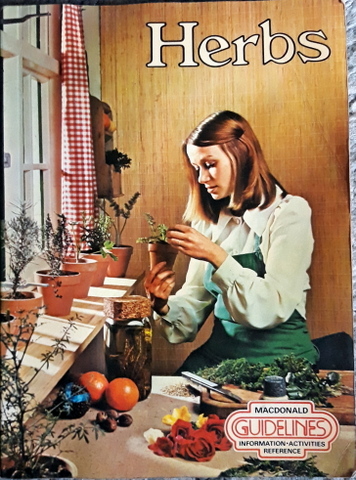
Herb Growing – Violet Stevenson – Sampson Low (UK) 1977 ISBN 978 0 562 00074 8 – This is another small book covering many herb aspects in moderate to low detail. The book has ten chapters of varying lengths (3 to 10 pages) covering in order: what is a herb; herb gardens; colour in the herb garden; herbs from seed; herbs in limited spaces; herbs in winter; cosmetic and potpourri herbs; drying herbs; wild herbs and uses of herbs. For a small book it has lots of colour photos and coloured line drawings.

Spice Travels – Ian Hemphill – Pan Macmillan Aust. (AUS) 2002 ISBN 978 0 7329 1151 6 – This is not a ‘how to’ type of book but more a travelogue of the Hemphill’s travels around the world (including India, Turkey, Mexico, Sri Lanka, Zanzibar and outback Aus) looking at how spices are grown, processed and traded in each area. Chapter titles include: Brotherhood of spice merchants; organic spice gardens in Mangalore; we meet the cardamom king and barking up the wrong tree. It is a well-written and fascinating book if you are interested in spices. There are a number of colour plates in the centre of the book.
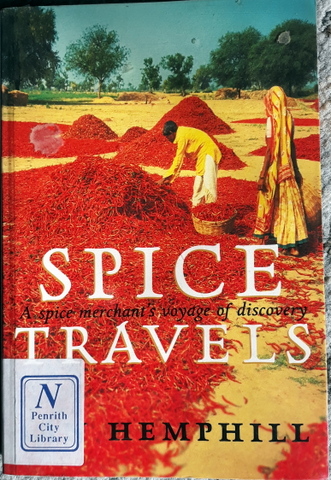
Garden Herbs – Frances Hutchison (Consulting Editor) – Fog City Press (US) 2003 ISBN 978 1 876778 94 4 – This is not a large book, but it is over 300 pages long and has lots of detail. After a couple of pages on ‘how to use this book’ it has four main sections. The first section (Growing Herbs) talks about the characteristics of herbs, climate, topography exposure and moisture, soil, garden planning, style and design, container gardening, choosing plants and propagation. The second section (Maintaining Your Herb Gardening) covers watering, weeding, adding organic matter, composting and preventing pests and diseases. The third section (Preserving, Storing and Using Herbs) covers what it says including herbs in the kitchen and aromatherapy. The fourth section (Plant Directory) makes up two thirds of the bulk of the book, comprised of over 200 one-page monographs providing information on climate and soil, growing habits, parts used, growing guidelines, flowering times, pest and disease prevention, harvesting and storage and uses. Each monograph has a colour photo of the herb covered.

The Herb and Spice Bible (3rd ed.) – Ian Hemphill – Robert Rose Inc. (CAN) 2014 ISBN 978 0 7788 0493 2 – This is a massive book, it is A4 format, 800 pages long and the premier work on using culinary herbs and spices. Part one of the book (The world of Spices) only takes up 22 pages and covers subjects such as a short history of the spice trade, the difference between a herb and a spice, culinary and medicinal herbs and spices, essential oils, oleoresins, essences and extracts, growing and drying your own herbs, buying storing and using fresh and dried herbs and spices. Part two of the book (spice notes) takes up a bit over 400 pages. It is a series of almost 100 detailed herb and spice monographs. Each monograph covers detail on names of the herb or spice, its background, discussion of the plant, how it is processed, how to buy and store it, how to use it and generally there are a number of associated recipes with each one. Part three (The art of combining spices) takes up the remaining 100+ pages, discusses the principles of spice blending, using herbs in spice blends and the herb and spice combination pyramid. The book then provides detailed recipes and production techniques for spice blends – almost 70 of them, every one that I had ever heard of and a lot I hadn’t. The book has lots of colour photos and if you are interested in using herbs and spice and/or making your own blends, this book is a must have!

The Potential of Herbs as a Cash Crop – Richard Alan Miller – Acres USA (US) 1985 ISBN 0 911311 10 6 – Obviously this is a book about small scale commercial growing of herbs rather than backyard scale. The book talks about survival of the small farm through alternative agriculture, soil considerations, basic farm practices and machinery, farm planning, techniques for bulk dehydration and storage of herbs grown on the farm. Also covered is processing, retail and bulk marketing, how herb growing and processing works as a cottage industry and the forager and his role in crop production. Scattered throughout the book are on-page monographs on particular herbs discussing how it is grown and processed commercially. There are a few line drawings in the book.
